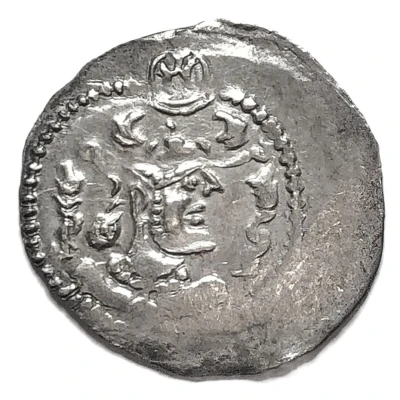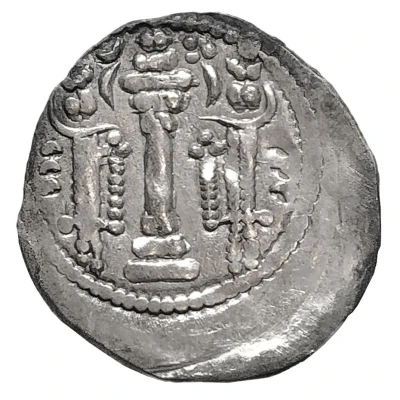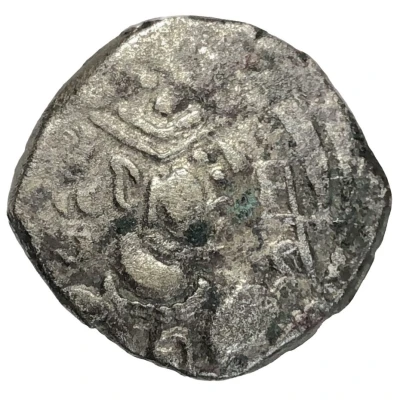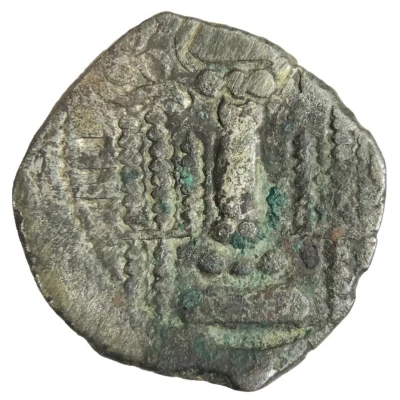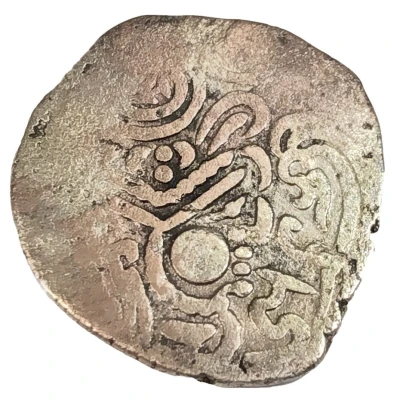
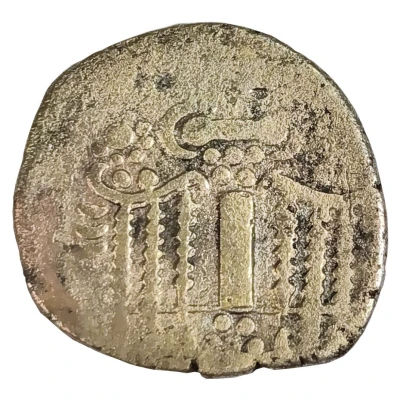

1 Jital - The Chahamanas – Sri Ha ND
| Billon (Silver content 220 to 010 as per samples observed, variation in silver purity) | 3.74 g | 23.24 mm |
| Issuer | Chauhan Dynasty (Indian Northern Dynasties) |
|---|---|
| Type | Standard circulation coin |
| Years | 700-800 |
| Value | 1 Drachm |
| Currency | Drachm (543-1390) |
| Composition | Billon (Silver content 220 to 010 as per samples observed, variation in silver purity) |
| Weight | 3.74 g |
| Diameter | 23.24 mm |
| Thickness | 1.55 mm |
| Shape | Round (irregular) |
| Technique | Hammered |
| Orientation | Variable alignment ↺ |
| Demonetized | Yes |
| Updated | 2024-10-05 |
| Numista | N#411564 |
|---|---|
| Rarity index | 95% |
Reverse
Fire altar with two attendants on either side
Edge
Plain
Comment
This series of coins is a part of Track 2 of Indo-Sassanian Coinage - Eastern Indo-Sassanian coinage, tentative period 7th to 8th Century CE
Track 2 consists of 3 series-
Vasudeva’s Imitations
Sri Ha series
Sri Ha Derivatives
KK Maheshwari in his book Imitations in Continuity places the coins in order as listed above.
Steve Williams (Finn235) debates that the Derivative coins came before the Sri Ha series, based on various features that appear or aren’t present in either of the 2 series.
Sri Ha series of coins present –
Obverse - a portrait to right; above the crown Devanagari “Sa” within a circle, but this feature is mostly out of flan; in front of the portrait is stylized representation of Devanagari “Sri” with variations and below the Sri is Devanagari letter “Ha” also with minor variations.
Reverse - the standard replication of Sasanian style Fire Altar found on almost all coins of the Indo-Sasanian series
an artist's impression of the full coin
KK Maheshwari, based on his studies, has highlighted specific features that appear in varying notable combinations, as presented below through tables and few sample coins
Fig 81
Fig 82
few coin sample
Type 1 - outline type 1, eye type 2, obv type 1
Type 2 - outline type 2, eye type 1, obv type 4
Type 2 - outline type 2, eye type 1, obv type 10
Type 2 - outline type 2, eye type 3, obv type 4
Type 2.4 - outline type 2.4, eye type 1, obv type 6
Type 2.4 - outline type 2.4, eye type3, obv type 4
Type indeterminable - outline type -, eye type 1, obv type 11
The above information is based on studies conducted by KK Maheshwari & extracted from his book - Imitations in Continuity
image credits -
1. Imitations in Continuity - K.K. Maheshwari
2. Amit Kher Collection
Interesting fact
One interesting fact about this coin is that it was made of Billon, which is an alloy of silver and other metals, and had a variable silver purity, ranging from 220 to 010 as per samples observed. This suggests that the coin's composition was not uniform and may have been influenced by various factors such as the availability of silver or other metals, or the minting techniques used at the time.













